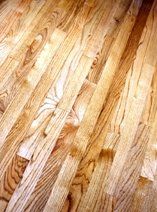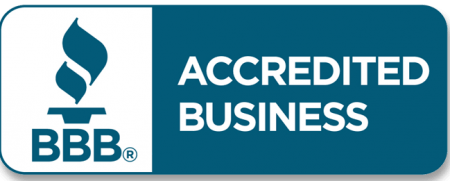Area RugsNo area rugs for 7-14 days depending if waterborne or oil-modified polyurethane is applied, to allow the floor to cure in all areas. Air flow helps the curing process.
Floor Protectors
"Scoot-N-Glides" that are made for wooden chair legs are available to protect the wood flooring from being scratched. Also available is a thick felt for other types of chair legs. "Scoot-N-Glides" need to rest flat on the floor for optimum protection. If chair legs are cut at an angle, the glide can do damage to the floor.
Sweeping
For maximum life and wear-ability of the floor finish, keep the floor as clean as possible of all substances that can scratch floors such as sand, gravel and other harmful substances. This can be accomplished by sweeping daily with a floor brush sweeper attachment, dust mopping or broom sweeping.
Damp Mopping
Harsh alkali cleaners may damage the finish and/or floor, and therefore should not be used. Do not allow water to stand on the floor and use as little water as possible. The "water/vinegar solution" will remove accumulated grease and sticky substances not removed by dry dust mopping or vacuuming. Remove food spills and other various liquids as quickly as possible with a dry or damp cloth.
Special Cleaning
To remove grease, rubber heal marks or similar stubborn stains which might remain after a normal cleaning with "vinegar/water solution," wipe with a cloth dampened with mineral spirits. Make sure that excessive amounts of fluids used for cleaning are not deposited on the floor. (Use rubber gloves.)
Wax , polish or Murphey's Oil Soap
Do not polish - wax floors - no paste wax - no Endust - and no Murphey's Oil Soap. Once the finish has been applied to the wood, there is a protective coating over the wood, and these products will lie on top of the finish, dulling the appearance and catching the dirt. They will keep an additional coat of finish from being applied whenever it is necessary.
Scuffs and Scratches
Bear in mind that all surfaces, even concrete, will scratch. Toenails on dogs can have a scratching effect on the finish, so be careful to keep the toenails trimmed. Rubber sole shoes on a "fresh finish" can also leave scuffs. Should you have a scratch in the floor, do not attempt to repair the scratch. First, call our office so that we can determine the best course of action.
High-Heel Marks
Since wood is a product of mother nature, a high degree of pressure from a concentrated point like a high heel can crush the wood fibers leaving a small indention in the floor. The quality of the finish has no bearing as far as the strengthening the wood fibers.
Expansion Cracks
The weather plays a part in this area. Since the wood is susceptible to the humidity in the air, natural wood fibers will pull in moisture, causing the wood to expand in the spring and summer months. During the winter months when the house is dry, there will be a "shrinking" effect in the width of the boards. A humidifier will help stabilize this condition. Wood floors need to be able to expand and contract with temperature and humidity. "Expansion cracks" from summer to winter are a natural trait of wood floors.
Cupping of Boards
Should the individual boards "cup" at the edges, this is a sign of damage from an outside source such as a leaking sink, a back door threshold, a refrigerator water line, etc. The floor will appear to have a "washboard" effect. Although you may not see visible signs of water, the wood will act as a sponge and soak up moisture in a capillary manner through the grain.
- Severe Cases of Water Damage: Boards must be replaced, area re-sanded and finished.
- Average Water Damage: Boards allowed to dry for four to five weeks, re-sand and refinish.
- Slight Water Damage: Area allowed to dry, cupping may recede.
Protection from Other Subcontractors
Should a painter or other subcontractor do any touch-up work after a floor has been finished, be sure to have him put down drop cloths.









